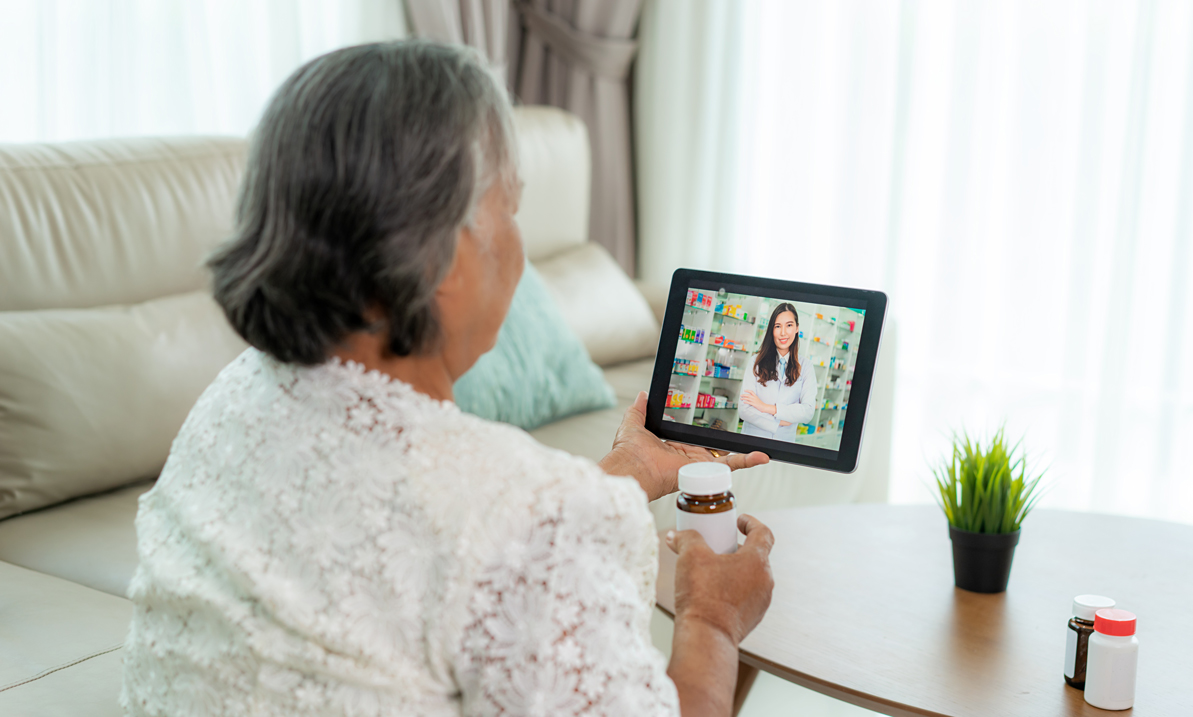Telehealth: Logging on for Better Health

The pandemic has given rise to innovation and digital transformation in various industries, including healthcare. How can telehealth improve the healthcare sector—and what’s stopping this lifesaving technology from flourishing?
Last April, the number of contactless consultations at 24/7 telehealth service KonsultaMD surged 450%. Filipinos hoping to avoid visiting hospitals and clinics chose to discuss their health concerns with doctors over phone or video calls.
In August, a bill enabling the national expansion of telemedicine and electronic health (eHealth) was filed at the House of Representatives. The bill aims to “establish the components of electronic health systems, regulate the necessary health and supporting infrastructure, and develop a framework for strategy and investment in the eHealth sector”.
For an archipelago like the Philippines, the benefits of telehealth could be exponential. Given that the national average is only 3.7 doctors per 10,000 population, one lifesaving technology that all Filipinos should have access to is telehealth.
What is telehealth?
The World Health Organization (WHO) defines telehealth as the “delivery of health care services, where patients and providers are separated by distance.” Using information communication technologies, healthcare providers can diagnose and treat diseases and injuries—all without patients having to leave the comfort of their homes.
Consultations can be done over video or telephone calls as well as live chat. With telehealth, doctors can monitor their patients remotely through wearable sensors, implanted health monitors, smartphones, and mobile apps. Telehealth and virtual care solutions can also improve physician-to-physician consultation, making the expertise of renowned specialists easily available to medical personnel continents away.
(Also read: How the Internet of Medical Things Can Revolutionize Healthcare)
What are the benefits of telehealth?
- Improved access. Telehealth could bring much-needed quality healthcare to remote areas. Geographic and economic disparities that hinder access to medical treatment could be resolved. Telehealth can provide patients in both urban and rural areas with safe, effective, and appropriate care in a timely manner.
- Cost efficiencies. An earlier diagnosis and more efficient management of diseases can lower the cost of healthcare. Telehealth can reduce travel times, improve survival rates, and result in fewer or shorter hospital stays.
- Safety of patients and doctors. Zero-contact consultations keep both the patients and doctors safer, making telehealth a necessary healthcare tool in the fight against COVID-19.
- Increased access for high-risk groups. Telehealth enables senior citizens and immunocompromised individuals to receive convenient, connected care at home.
- Lower demand for supplies and hospital beds. Telehealth keeps low-risk patients at home, helping medical facilities from being overwhelmed. It also decreases the use of personal protective equipment (PPE): clinicians can communicate with admitted patients via videoconferencing instead of face to face.
(Also read: The Future of Safety: Smart PPE)
What are the barriers to telehealth adoption?
- No access to technology. Not everyone has a smartphone, tablet, or desktop computer—devices that are necessary to make video calls, download apps, or communicate on live chats.
- Limited digital literacy. Less tech-savvy people (especially older patients) may not get the full benefits of online health services.
- Lack of infrastructure. Medical facilities and personnel that do not have adequate training and infrastructure to provide telehealth services will not be able to pivot to a digital healthcare model.
- Broadband access. Patients in remote areas who have limited or no access to broadband will not be able to use telehealth services.
The brightest silver lining of the COVID-19 pandemic is that it has sparked innovation and transformation in various industries, including healthcare. Like in many countries around the world, Filipino companies are addressing medical personnel and equipment shortages through collaborations and digital technologies.
IMI, for example, has officially received certification from the Food and Drug Administration (FDA) for its Ventura Continuous Positive Airway Pressure (CPAP) device. This non-invasive ventilator was designed by the University College London Hospital (UCLH) and Mercedes-AMG High Performance Powertrains. AC Health, which is also part of the Ayala Group of companies, has launched HealthNow, an app for scheduled teleconsultation services.
We may live in uncertain times now, but companies who are truly committed to improving lives through innovation and digital transformation are paving the way for a safer, brighter future for all.
As one of the Top 20 EMS companies in the world, IMI has over 40 years of experience in providing electronics manufacturing and technology solutions.
At IMI, we believe that humanity drives technology, and we direct our passion at solutions that enhance our way of living. With more than 400,000 square meters of factory space in 22 factories across 10 countries, we are positioned to build your business on a global scale.
Our proven technical expertise, worldwide reach, and vast experience in high-growth and emerging markets make us the ideal global manufacturing solutions partner.
Let's work together to build our future today.


